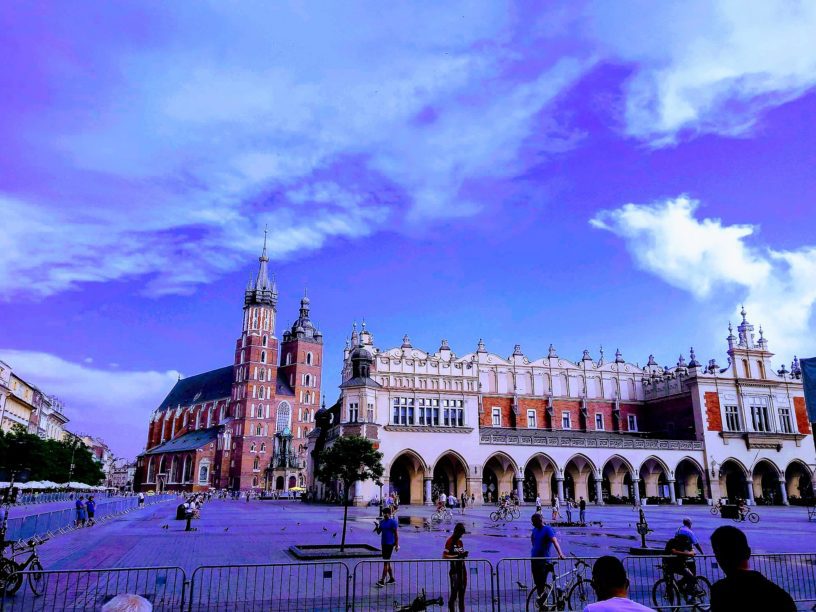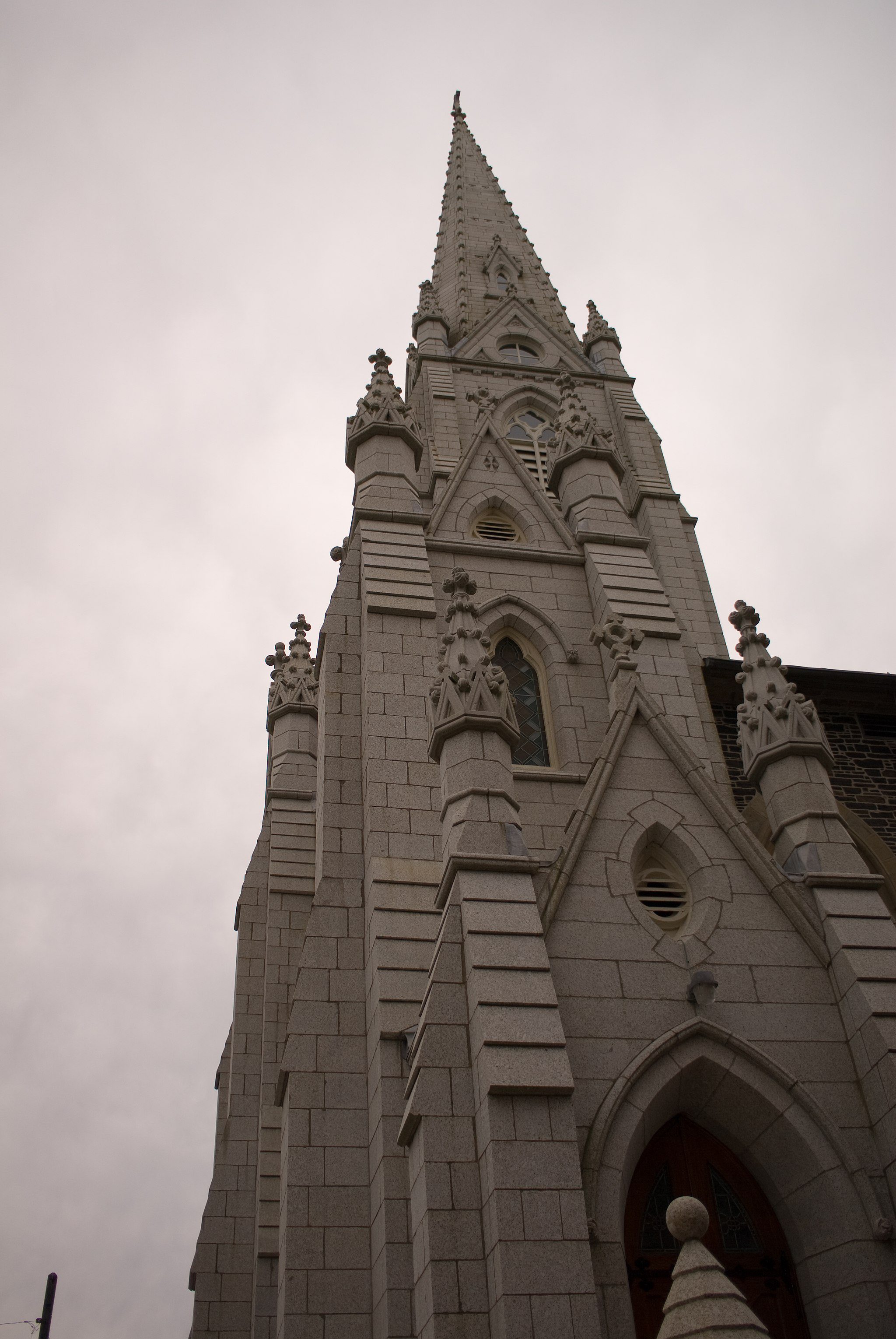
St._Mary’s_Basilica,_Halifax photo by CP Hoffman-Wikimedia
Top 10 Fascinating Facts about Bazylika Mariacka
The church is also known as the St Mary’s Basilica and is a beautiful brick gothic church adjacent to the main square in Krakow, Poland.
The foundation of the church trace back to the early 13th century and serving evidence of Polish Gothic architecture.
The church is dominated by two towers of different heights, and has an exquisite interior, with remarkable carved wooden alt.
Today the Church is one of the largest brick churches in the entire world, losing only to Sant Petrino, Basilica in Bologna.
Here are the top 10 fascinating facts about Bazylika Mariacka.
1. The church has a Polish Gothic Architecture
The foundations of St Mary’s Basilica date back to the early 13th century and its design was built by the cultural trends of that time.
The church is proof of the polish gothic Architecture that arrived in Poland in the early 13th century.
Gothic Architecture was so popular that most of the early churches centered around it as their main theme. Most buildings in Poland are made of brick and belong to the Baltic Brick Gothic.
Saint Mary’s Basilica served as an architectural model for several churches that were designed and constructed by the Polish diaspora abroad, especially those like Saint Michaels and St John’s Cantus in Chicago, which were designed in the Cathedral style.
2. The church was damaged by events of wars
The building of the church was destroyed during the Mongol invasion of Poland, between 1290 to 1300.
The church was also slapped by the hand of destruction during World War two when the Red Army marched on German-occupied Gdanski and was also annihilated to the ground.
The church’s wooden roof was burnt down completely and most of the ceiling fell in. Fourteen of the large vaults collapsed and the windows were shattered to the ground In other places, the heat was so intense that some of the bricks melted, especially in the upper parts of the tower.
3. The church was severally renovated
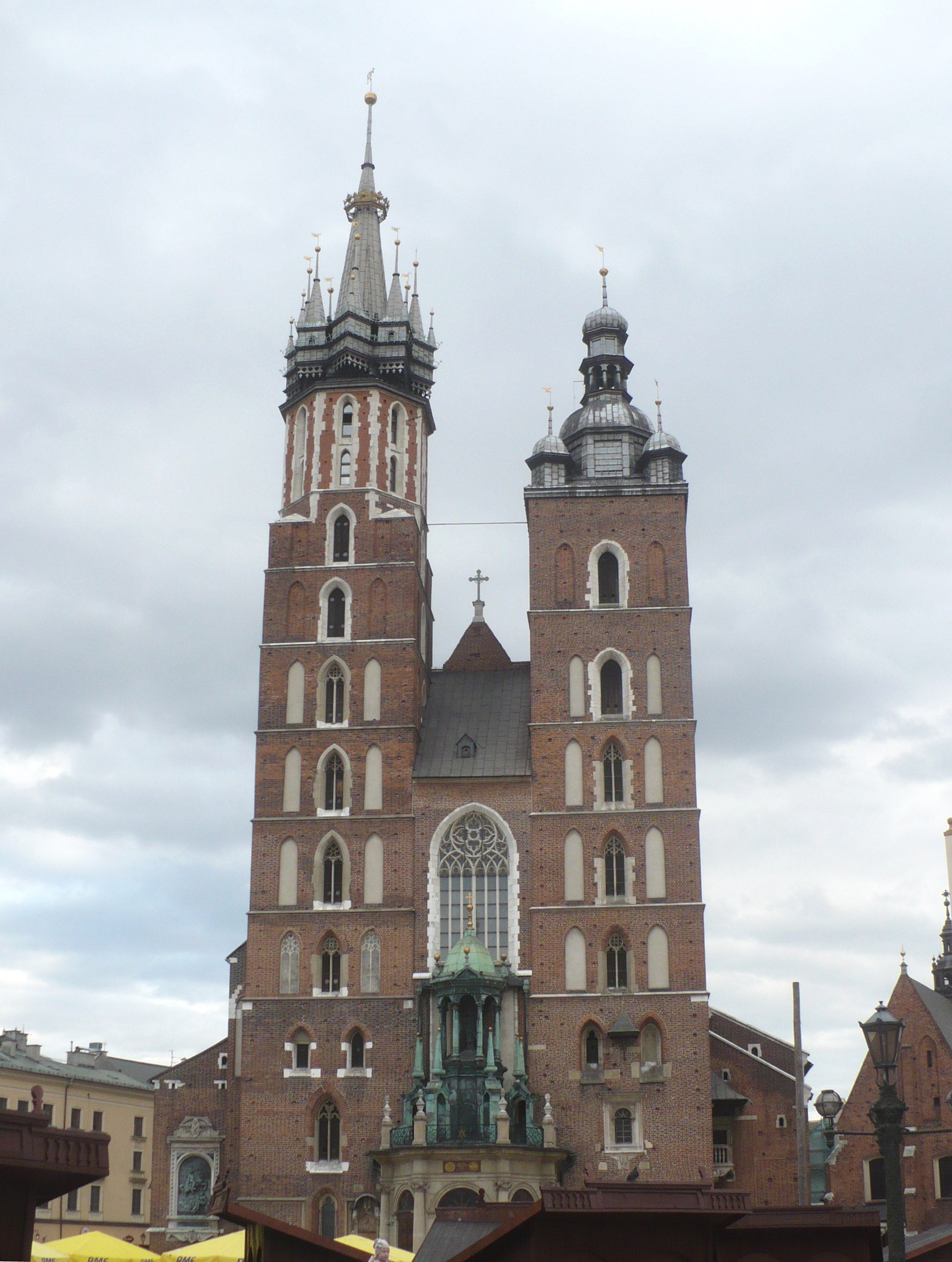
Kościół_archiprezbiterialny_pw._Wniebowzięcia_Najświętszej_Marii photo by Oksana Protsenko-Wikimedia
After experiencing much destruction due to various catastrophes, the church finally got a moment to demand attention for repairs.
The early Gothic church was built on the remaining foundation after the Mongol invasion and was constructed twenty years later, in 1320.
Much of the renovation was done during the reign of Casimir 3 the great between 1355 and 1365 with much of the contribution done by Mikolah Wierzynek.
The main body of the church was completed in 1395-97 and a vault was installed, which later succumbed to an earthquake that hit Krakow.
In the first half of the 15th century, the side chapels were added, as well as a tower that served as a watch tower for the entire city.
The tower was bestowed with a helmet and in 1666, it received a crown which is present to date. The interior of the church was rebuilt in the late Baroque style in the 18th century.
4. The church’s Altarpiece was a national treasure

Wit_Stwosz_Altarpiece_at_St._John_Cantius_Church_in_Chicago Photo by Sjcantius-Wikimedia
At the end of the 15th century, the St Mary’s church received an enriched masterpiece, an Altarpiece of Veit Stoss which was of a late Gothic design.
The Altarpiece was declared a national treasure of Poland. The beloved Altarpiece was curved by the famous German-born sculptor, Veit Stoss.
The Altarpiece survived the German occupation of Poland, it was shipped to the Third Reich on the order of Hans Frank, who was a governor-general.
The piece was later recovered in 1946 in Bavaria, it miraculously survived in the basement of a heavily bombed Nuremberg Castle.
5. St Mary’s church has one of the largest astronomical clocks
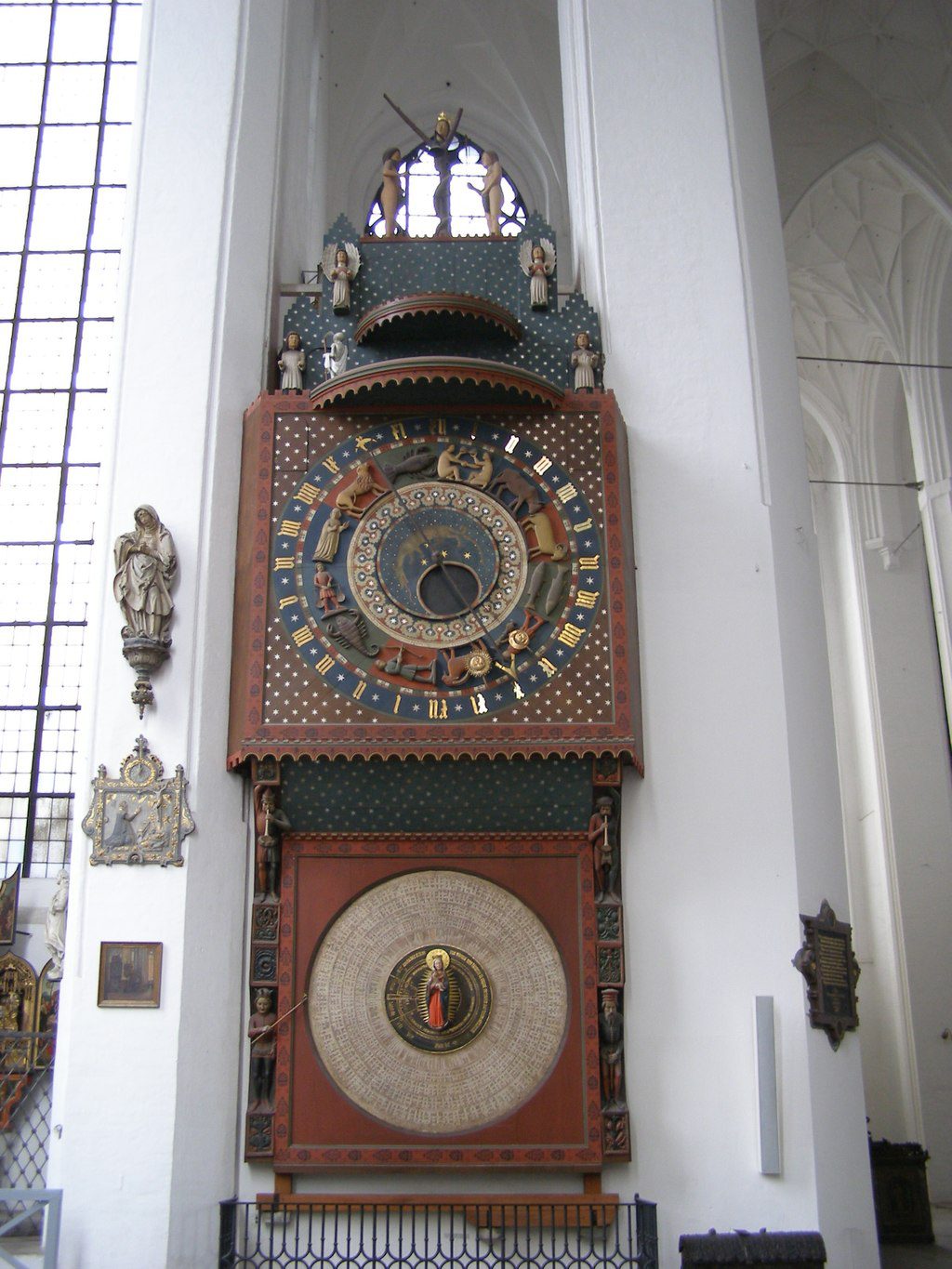
Gdańsk – Bazylika Mariacka photo by Andrzej Otrębski-Wikimedia
One of the features of the most famous church is its astronomical clock which was built in 1464 and was the largest in the world at 14 meters in height.
The clock is a weave of medieval wonder and what catches the interest of many, is how it shows everything from the time of the day, the position of the moon and sun the signs of the Zodiac sign, and even a calendar of saints.
The features of the clock consist of three distinct tiers with a rotating parade of apostles, and the three kings that appear daily at noon at the top.
Beneath that feature, the clock holds the intricate zodiac face and it is fixed on top of the saint’s calendar.
The clock is 45 feet tall and has it has its fair share of legends and myths have grown as proof of its existence.
According to legends, the clockmaker of the church’s eyes was gouged out deliberately by the authorities so that he is unable to produce a clock of equal beauty anywhere else.
6. The Church was added to UNESCO world heritage sites
The church of St. Mary’s Basilica is located in the medieval old town of Krakow and is a living artifact of medieval treasure.
The church’s physical structure is not the only thing unique to it but also the interior design and the murals decorated with it
In 1978, the Church was added to the UNESCO world heritage site alongside the historic Center of Krakow.
7. St Mary’s Trumpet call was played since the 14th century
The Hejnat Trumpet call of Krakow, also known as St Mary’s Trumpet call is played every hour,24 hours,365days a year.
The Trumpet signal is played from the top of the tower and has been played daily since the 14th century.
The Trumpet is played every hour, four times in succession, and is played in each of the four cardinal directions, by a trumpeter on the highest tower of the Church.
The Triumph call originated in the Middle Ages and the call was played at dawn and dusk to alert the gatekeepers when to open and shut the city gates.
The triumph call ends abruptly and the reason behind it is clouted with myths.
The most common myth tells the tale of the time of the Tatar invasion of Poland in 1241.
The myth unfolds the story of a sentry who was playing the Trumpet call from the church tower to warn the inhabitants of the Krakow invasion by enemy troops but sadly his call was cut short when an arrow reached his throat killing him, thus ending the melody.
8. The Marian square was once a burial site
At the early beginning of the 19th century, the city made a decision to do away with a cemetery near the Basilica due to the introduction of Austrian sanitary regulation, and it was shuttled down and replaced by a public square.
Today the square is known as Marian square and it’s where the Church is suited at.
9. The church has one of the largest bells in Krakow
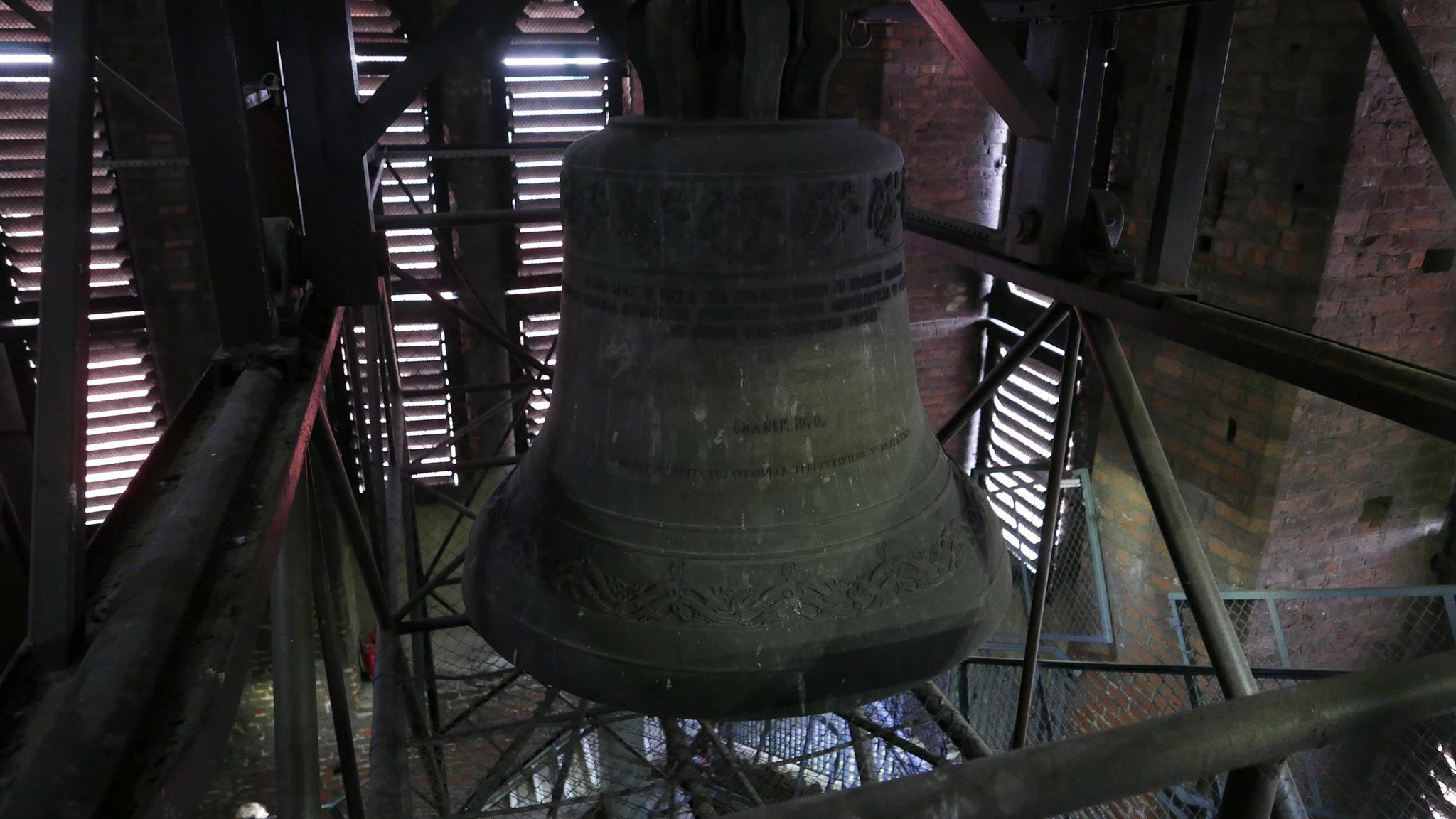
St._Mary’s_Basilica_Bell,_Gdansk photo by Ken Eckert-Wikimedia
Known as the Knightly Polzygmunt or the half Sigismund, is the largest of the Marian bells, once the largest bell in Krakow.
The bell has a diameter of 80 centimeters and a weight of nearly 5 tons.
The bell was founded for the Basilica in the 15th century by a group of polish knights, its sound can be heard daily at 9.05 PM and on Fridays at 3.04 pm.
10. The church was a center of unusual events
The church of St Mary’s Basilica was once a place where people met for dates and a popular place for meetings, whatever outfit was seen in the church had a chance of becoming fashionable.
The church space is very spacious and can hold up to nine masses at the same time once where one of the world’s first libraries was opened.
Planning a trip to Paris ? Get ready !
These are Amazon’s best-selling travel products that you may need for coming to Paris.
Bookstore
- The best travel book : Rick Steves – Paris 2023 – Learn more here
- Fodor’s Paris 2024 – Learn more here
Travel Gear
- Venture Pal Lightweight Backpack – Learn more here
- Samsonite Winfield 2 28″ Luggage – Learn more here
- Swig Savvy’s Stainless Steel Insulated Water Bottle – Learn more here
Check Amazon’s best-seller list for the most popular travel accessories. We sometimes read this list just to find out what new travel products people are buying.

